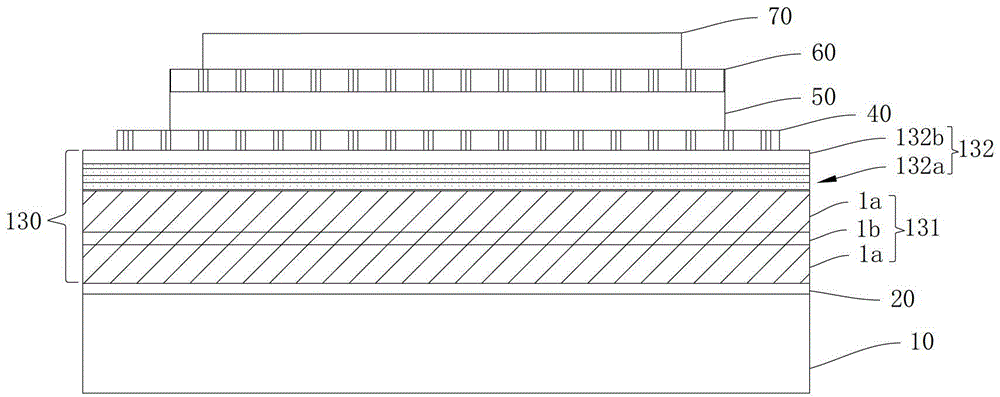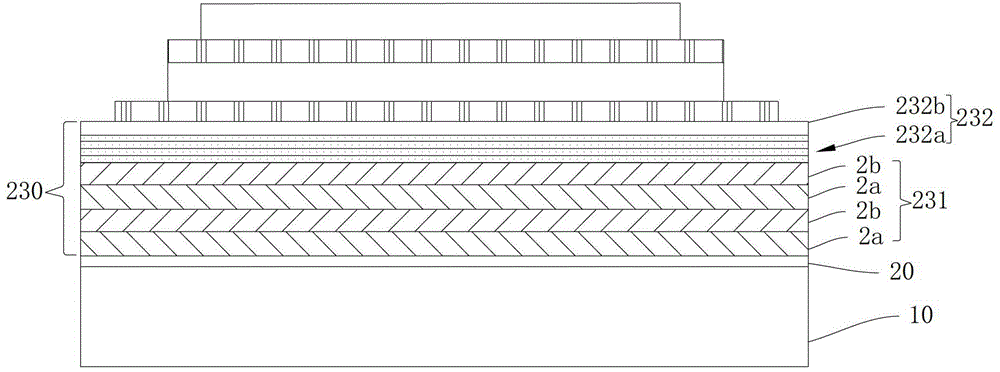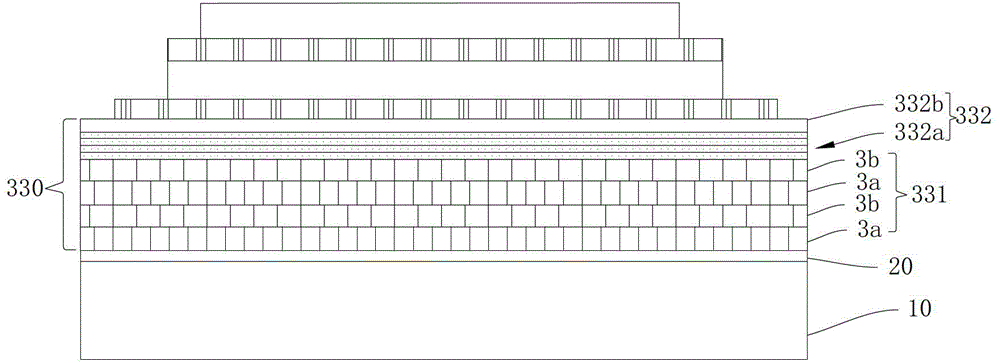Pyroelectric thin film infrared focal plane detector chip and manufacturing method thereof
A detector chip, infrared focal plane technology, applied in the field of infrared detection, can solve the problems of difficult operation and control, increased thermal conductivity of aerogel, and high surface roughness, so as to improve stability and reliability, reduce heat Conductivity, the effect of improving sensitivity
- Summary
- Abstract
- Description
- Claims
- Application Information
AI Technical Summary
Problems solved by technology
Method used
Image
Examples
Embodiment 1
[0063] like figure 1 As shown, the pyroelectric thin film infrared focal plane detector chip of this embodiment includes, from bottom to top, a substrate 10, an adhesive layer 20, a thermally insulating support structure 130, a lower electrode 40, a photosensitive element 50, an upper electrode 60 and an infrared Absorber layer 70 . Wherein, the heat insulating support structure 130 includes from bottom to top: a heat insulating layer 131 and a transition support layer 132 .
[0064] In this embodiment, the heat insulating layer 131 includes SiO stacked alternately up and down 2 Nanoarray 1a and TiO 2 Nanoarray 1b. Specifically, SiO is sequentially deposited from bottom to top in a direction away from the substrate 10 2 Nanoarray 1a, TiO 2 Nanoarray 1b and SiO 2 Nanoarray 1a. Among them, SiO 2 Nanoarray 1a, TiO 2 The nanoarray 1b consists of the corresponding SiO 2 Nano structural unit, TiO 2 Nanostructural units (not shown in the figure) are composed. SiO of this ...
Embodiment 2
[0086] The difference between this embodiment and Embodiment 1 lies in the adhesive layer and the heat insulating support structure. like figure 2 As shown, the thermal insulation layer 231 in this embodiment includes sequentially depositing SiO from bottom to top in a direction away from the substrate 10 2 Nanoarray 2a, TiO 2 Nanoarray 2b, SiO 2 Nanoarray 2a and TiO 2 Nanoarray 2b; and SiO 2 Nanoarray, TiO 2 The tilt directions of the nanoarrays are opposite, making the SiO 2 Nanoarray TiO 2 The nanoarrays are arranged in a "zigzag" shape. Composition SiO 2 Nanoarray, TiO 2 The nano-units of the nano-array are all oblique rod-shaped.
[0087] The deposition steps of the adhesive layer 20 in this embodiment are as follows: using the electron beam deposition method, controlling the deposition angle to 0°, the deposition rate to 0.2 nm / s, and depositing a layer of HfO with a thickness of 20 nm on the Si substrate 10 2 as the adhesive layer 20 .
[0088] The preparat...
Embodiment 3
[0095] The difference between this embodiment and Embodiment 1 lies in the adhesive layer and the heat insulating support structure. like image 3 As shown, the thermal insulation layer 331 in this embodiment includes sequentially depositing SiO from bottom to top in a direction away from the substrate 2 Nanoarray 3a, TiO 2 Nanoarray 3b, SiO 2 Nanoarray 3a and TiO 2 Nanoarray 3b; and SiO 2 Nanoarray, TiO 2 The nano-arrays are arranged in a columnar shape and are perpendicular to the surface of the substrate.
[0096] The deposition steps of the adhesive layer 20 in this embodiment are as follows: using the electron beam deposition method, controlling the deposition angle to 0°, the deposition rate to 0.2 nm / s, and depositing a layer of SiO with a thickness of 50 nm on the Si substrate 10 2 as the adhesive layer 20 .
[0097] The preparation method of the thermal insulation layer 331 of the present embodiment is as follows:
[0098] (i) Adjust the deposition angle to 86...
PUM
 Login to View More
Login to View More Abstract
Description
Claims
Application Information
 Login to View More
Login to View More - R&D
- Intellectual Property
- Life Sciences
- Materials
- Tech Scout
- Unparalleled Data Quality
- Higher Quality Content
- 60% Fewer Hallucinations
Browse by: Latest US Patents, China's latest patents, Technical Efficacy Thesaurus, Application Domain, Technology Topic, Popular Technical Reports.
© 2025 PatSnap. All rights reserved.Legal|Privacy policy|Modern Slavery Act Transparency Statement|Sitemap|About US| Contact US: help@patsnap.com



